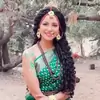God of Lightning, Thunder, Rains and River flows
King of Heaven
Painting of Indra on his elephant mount, Airavata.
Devanagari
Sanskrit transliteration
Affiliation Deva (Hinduism, Jainism)
Abode Amarvati in Svarga, Indraloka, Mount Meru
Weapon Vajra (Thunderbolt)
Symbols Vajra
Mount Airavata (White elephant), Uchchaihshravas (White horse)
Texts Vedas, Puranas, Epics
Personal Information
Consort Shachi (Indrani)
Children Vali (Ramayana), Arjuna and others
Greek equivalent Zeus
Roman equivalent Jupiter
Norse equivalent Thor or Odin
Slavic equivalent Perun




















